Urban legends about video games... part 1?
Video games have their own myths. Some are dark, others fascinating. Some most likely fake, others confirmed to be genuine stories. Here are some of the most interesting and creepy ones.
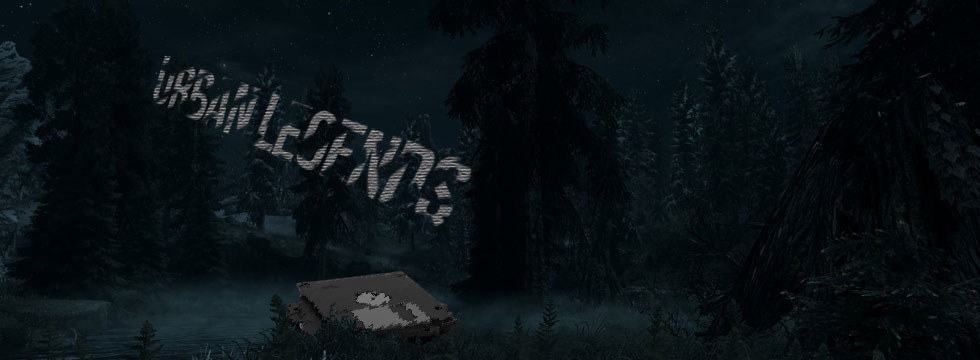
Urban legends, the myths of today – whatever you wish to call them, humans have always had a propensity for unexplainable stories. Those who enjoy being afraid are constantly on the lookout for such tales, which they eagerly share with others. Like Chinese whispers, the stories get blurrier every time they’re recounted, losing some details and gaining new ones in the process. Decades later, it’s hard to tell what’s true and what’s just a figment of somebody’s imagination. However, there’s no shortage of amateur detectives, who eagerly devote their time to verifying urban legends – with different outcomes. Sometimes they do succeed, managing to prove that the stories believed only by a few actually did take place.
The video games industry is no different. There are plenty of legends, some of them really dark, others genuinely fascinating. Some are most likely fake, others were proven to be 100% true. We’d like to show you a couple of the most interesting ones – without judging how much truth there is to them; the decision whether or not to believe them is entirely up to the readers.
Pale Moon Shall Guide You
During the 1980s, when the Internet wasn’t so widely available, the distribution of video games was quite a different kettle of fish than it is today. Back then fans of electronic entertainment would congregate to trade simple games that would fit on a single floppy disk. Such meetings were also attended by amateur programmers, for whom it was the only chance to share their own games with other players. Sometimes these games would “go viral” and reach the other end of a country.
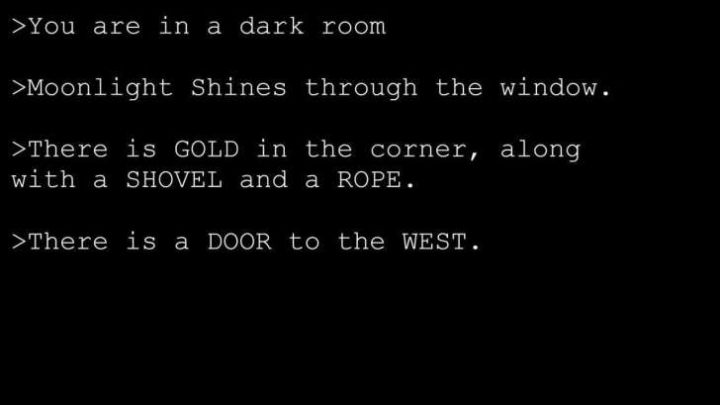
One such informally distributed game was Pale Luna – a member of a now-dying breed of text-based adventure games, popular in the San Francisco Bay in mid-1980s. It was a very scanty game, and full of bugs at that. After booting it up, the players were greeted with the following line:
You are in a dark room. Moonlight shines through the window. There is GOLD in the corner, along with a SHOVEL and a ROPE. There is a DOOR to the WEST.
The game accepted only five commands: Pick up shovel; Pick up gold; Pick up rope; Open door or Go west. After getting out of the room, the text on the screen read:
Reap your reward. PALE LUNA SMILES AT YOU. You are in a forest. There are paths to the NORTH, EAST and WEST. Command?
From that moment on, the game would become extremely annoying and repetitive. Choosing the right path simply reset the same screen; worse still, choosing the wrong one resulted in the system crashing, forcing a hard reset. It was also impossible to use the items; if the player wanted to use the gold, the game responded with Not here; use the shovel – Not now; if they wanted to use the rope, the game said You’ve already used this.
At that point, most people waved the game off as a bad joke and piece of extremely lazy programming. But there is always that one guy with too much free time and the patience of Buddha. Michael Nevins decided to check whether there’s more to Pale Luna than the few lines of repeating text. It took around five hours of trials and errors to get through the subsequent screens. After an infinite number of resets, he saw the following line:
PALE LUNA SMILES WIDE. There are no paths. PALE LUNA SMILES WIDE. The ground is soft. PALE LUNA SMILES WIDE. Here. Command?
Another hour of trying different commands, and he managed to find the right one: Dig hole, Drop gold, Fill hole. To his great excitement, it looked as if he’d reached the end of the game:
Congratulations.
—— 40.24248 ——
—— -121.4434 ——
The strings of numbers were quite obviously geographic coordinates. Upon brief examination, it turned out that the spot was just a place in a forest 50 miles north down the State Route 32 from Chico, CA. Armed with a map, a compass and a shovel, Michael was determined to solve the riddle of Pale Luna. Getting through the forest, he noticed the path he was following was somewhat corresponding to the one he’d followed in the game. Hoping to reap some eccentric reward, he started digging. He found a severely decayed head of a teenage girl.
Horrified, Michael promptly informed the police of what he had found – the girl was identified as Karen Paulsen, an eleven-year-old who had been reported missing a year and a half before. Despite their efforts, the police were unable to identify the maker of Pale Luna – because the meetings were very informal and many different people traded games there, all that was found were dead ends. Today, some people can offer up to six digits for a genuine copy of the game, which, however, is virtually impossible to come by.
The rest of the girl’s body was never found.
JVK1166z.esp
A couple years ago, Morrowind forums were stirred to life with the news of a bizarre mod called JVK1166z.esp. No one really knew what the mod was supposed to do – it apparently wasn’t functional. After it was activated, the game just froze at the title screen, and after an hour it got back to the desktop. Those who had the patience to wait reported that the save games and other game files became corrupted after that time.
The mod was then determined a virus and people were warned not to download it. The whole thing went quiet, and the links to the oddly named mod started to die out, making it pretty difficult to find it.
A year later, when everyone had forgotten about JVK1166z.esp, the forums started buzzing again – there allegedly existed a way to run the game with the mod – through a DOS emulator. Indeed, the solution was real, although the game wasn’t exactly what people’d expected it too be. It was running a bit slower; there was no main menu or options.
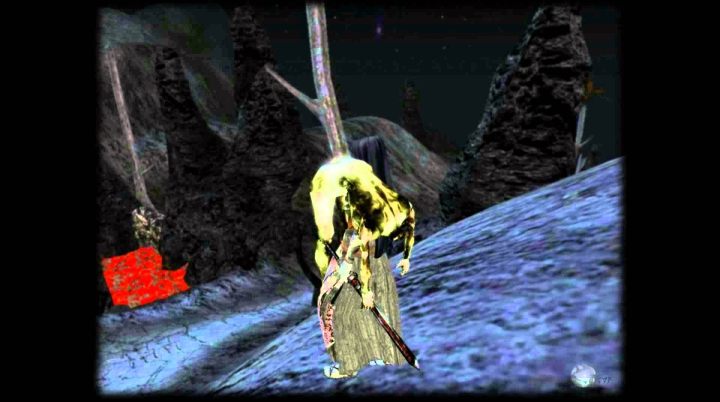
The mod itself was rather unusual. All key NPCs were dead, but their bodies never disappeared. The remaining characters were acting normally… most of the time. Once every night, all of them left their houses, went outside and commenced a mantra: “Watch the sky”. Another important change was the fact that the protagonist was steadily losing small amounts of health – more if the player didn’t move.
The reason for that was soon discovered. An unknown character was responsible for that, dubbed by the community the Assassin. Totally dark, with textures modded beyond recognition, moving in an unnatural, spider-like fashion, the Assassin would usually stay hidden, close to the player but concealed. Some players, however, reported that they did see him for a split-second when he was waiting around a corner, before he vanished again. You could only see him really well if your character died – the Assassin then crawled all over the body.
After a long search, a new NPC – introduced with the mod – was discovered. The NPC gave the player a quest to explore a dungeon called The Citadel. It was an immense location, with challenging combat, hence only a few players managed to reach the end of it. There they would find a room that was named the Portrait Room. It was filled with framed paintings, which – like in sprites-era games – were always facing the player. The pictures were imported straight from My Pictures folder, which oftentimes resulted in pretty hilarious collages.
At the end of the room was a door, which could not be opened in any way. After a few attempts, most players simply gave it up and left the Citadel. But they noticed the game world was changed. The character that gave them the quest wouldn’t say anything apart from “Watch the sky”. The rest of the NPCs stopped talking altogether; any interaction with them became impossible. The only thing they would do was getting outside at one point at night to repeat their mantra. The most significant change went by unnoticed for quite a while. The standard night sky texture from Morrowind was replaced with pictures of the real firmament with the celestial bodies moving.
It didn’t take long for the players to figure out that there must exist some relation between the stars and the door. The most popular theory assumed that the door should open at some specific point, which can be determined by paying attention to what happens in the sky. Verifying this theory was really cumbersome, though, because of the Assassin, who forced players to constantly move in the game. If you’d left the protagonist idle, they would quickly die.
One player decided to sacrifice a few nights to uncover the bewitching secret of the door. They assumed that since the sky in the game was a rendition of the sky from February 2005, and since the information on how to run the mod surfaced in February 2008, the door would open after three years of in-game time – that is three real days.
According to the daredevil’s reports, the game was becoming altered with hours. The Assassin was no longer quietly sneaking behind the player if they didn’t move – he would now let out a harrowing shriek before attacking the idle avatar. As the third year in the game was approaching, the game would become darker and darker – almost unplayable. Increasing the gamma on his monitor helped a bit, and the persistent player went into the Citadel to – on the verge of drifting off to sleep – discover the door to still be closed. After going back to the surface, he found the sky had been reset to February 2005. Tired and angry, he stopped playing.
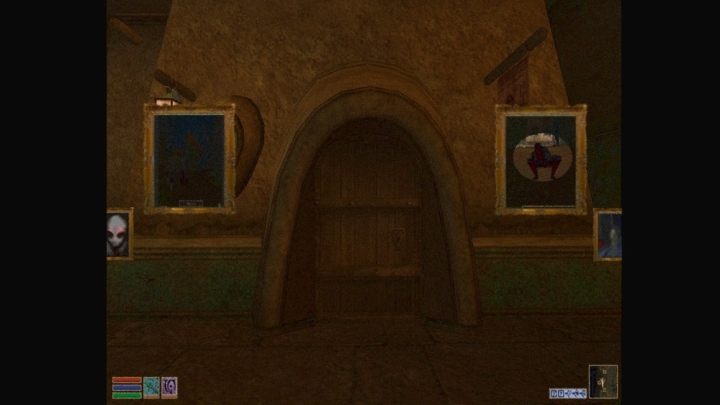
But some time later, he came back. He tried again, this time waiting even longer. Barely containing his own body and managing not to fall asleep, he reached the sky from 2011. The game world was still dark, but all NPCs went to the closest dungeons, where they killed all enemies and then just stood there – any interaction with them was impossible. When he’d reached 2014, the NPCs faces were altered, dark strings of blood dripping from their eyes.
One day more, and the game world became totally empty – now there were no monsters either. He didn’t need headphones to hear the Assassin; he had heard his cry so many times that he was able to tell when it would happen. He could almost hear it even when the speakers were out. When he went to the bathroom, his mind played tricks on him, showing him someone moving really fast in the corner of his eye.
Eventually, his mind gave up and he flaked out to a terrifying dream: he dreamed of the Assassin attacking him in his bed. He tried pushing the creepy figure off, but his hands got stuck in his stomach as if the Assassin was made of tar. When he woke up, he found that his character was in a different place – Corprusarium. There he talked to Yargrum, one of the NPCs. Or rather, Yargrum spoke to him, directly. Telling him things about himself. Saying that the door will soon open and that no one had gotten this far.
Then he really woke up. In the last message he wrote that he could hear something knocking at his window and that he’s not even sure if he’s still awake.
That was his last online post.
The Game that Deleted Itself
In 1989 a small company called Karvina Corp released Killswitch, a game that could be described as the grandfather of survival horrors such as Silent Hill. The game allowed the players to assume the role of either of the two characters: Porto, a woman that changed size and was unable to fight, or Ghast, an invisible demon that could engage in combat. Ghast was invisible not only to enemies, but also to the player, which – as you could imagine – made it really difficult to control him. Everyone eventually had to play through the game as Porto.
The woman explored a mysterious mine, unraveling the history of the place, in which she used to work herself. The bosses of the mine were displeased with the low profits yielded by the mine, so they would send foremen there, who abused and manhandled the workers in order to make them work harder. Human suffering unleashed ancient demons, which took possession of the mining equipment and started slaughtering everyone inside. Porto wanted to obtain some evidence of the massacre and then escape the haunted mine.
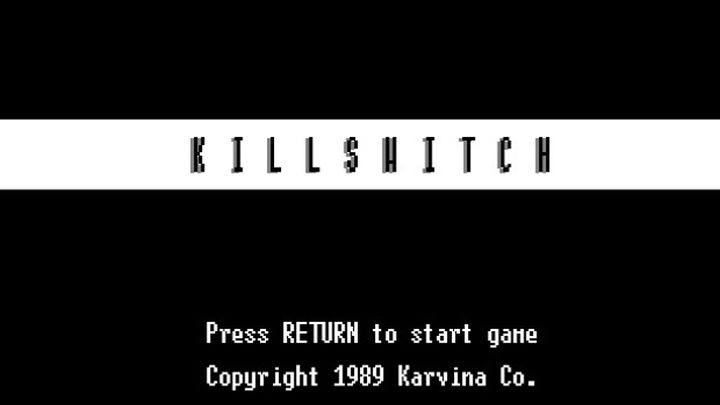
The game was incredibly difficult and contained a few riddles, which no one could solve. No one but a mysterious member of the game’s community, hiding under the name Porto881, who shared the solutions of the hardest puzzles. Thanks to their help, many players were finally able to complete the game… just to say goodbye to Killswitch forever after seeing the ending.
The game was designed in a way that made it impossible to copy it; after reaching the end of the adventure, it permanently deleted itself from the computer, too. Because only five thousand copies were ever made, the number of playable copies of Killswitch started shrinking very quickly. This caused a lot of discontent among the players, who were disappointed with the fact that they were unable to learn all of its secrets – most of all Ghast’s part of the story. Pestered by the players, the developer released an official statement in May, 1990. It read:
Killswitch was designed to be a unique playing experience: like reality, it is unrepeatable, irretrievable, and illogical. One might even say ineffable. Death is final; death is complete. The fates of Porto and her beloved Ghast are as unknowable as our own. It is the desire of the Karvina Corporation that this be so, and we ask our customers to respect that desire. Rest assured Karvina will continue to provide the highest quality of games to the West, and that Killswitch is merely one among our many wonders.
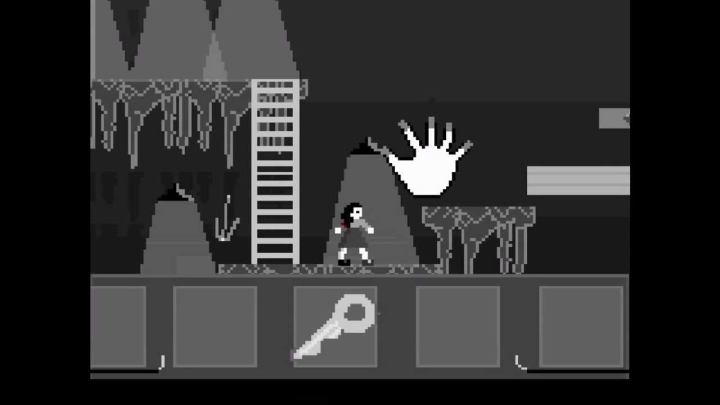
Because of one word, the statement aggravated the whole community to obsession. It said: “Her beloved Ghast.” The demon didn’t appear even once during Porto’s story – there wasn’t even the slightest mention of him throughout the whole game. This prompted many theories among the fans, such as that the end of Ghast’s story is the beginning of Porto’s; that Ghast becomes the gases that Porto inhales, enabling her to change size. The truth was never revealed, and obtaining new copies of the game became virtually impossible. The few people that still could play the game tried to finish the story of Ghast, but it wasn’t really possible. Everyone, sooner or later, had to finish Killswitch as Porto – just to reach the white screen that meant the game has been deleted.
That changed in 2005, when perhaps the last copy of the game, in perfect condition, was put up for an auction. A man from Japan, Yamamoto Ryuichi, purchased the copy for $733,000 and promised to record and share the full playthrough. Instead, the only thing he posted was a one minute and forty-five seconds clip that was deleted soon after. It showed Ryuichi, gaunt and crestfallen, the computer screen with the character selection window over his shoulder.
Ryuichi was crying.
Feel like reading more?
This is our attempt to bring some of the most interesting urban legends to the players. We felt that doing too many of them within one piece would be too much, so today we decided to bring you just these three. If you feel like getting to know some more mysterious stories, let us know and in due time we’ll prepare a new selection of myths from the gaming community. Who knows… the stories might get even crazier…
